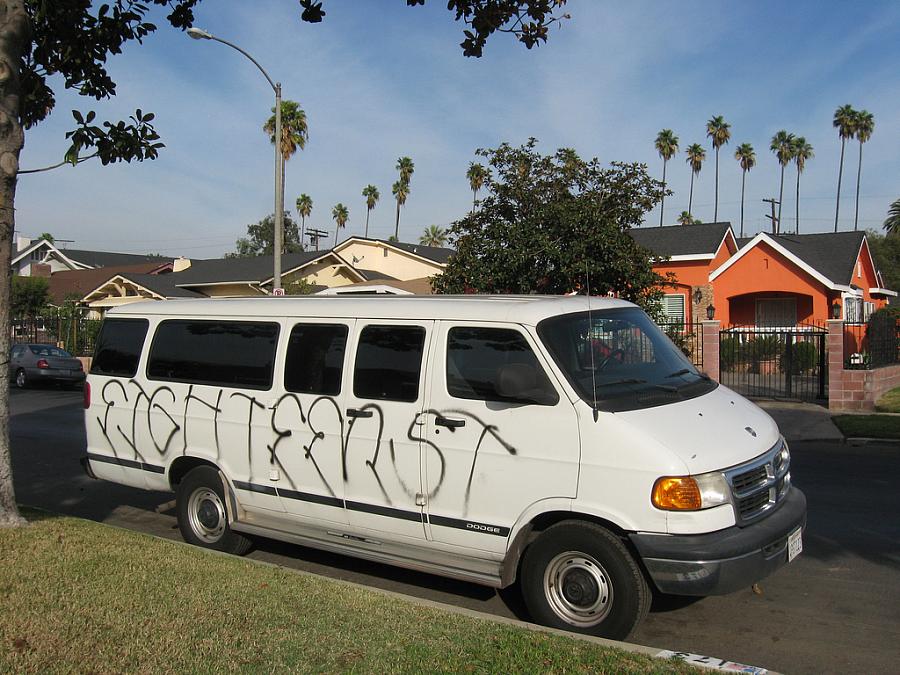How gangs impact communities' health

Courtesy of cgkinla via Flickr
Driving around South Central or East Los Angeles, it's common to see young crowds gathering outside mortuaries. Some call the area the "gang capital" of the United States, with more than 450 gangs with at least 45.000 active gang members, according to the LAPD. By the age of 20, 60 percent are either dead or incarcerated.
Read about the projects of other 2014 California Health Journalism Fellows.
Gang violence has traditionally been considered a public safety issue, but it is also a public health problem. Gang activities and the gang power control war result in dozens of death per year, as well as hundreds of injuries and long term disabilities. The LAPD and the Centers for Disease Control and Prevention say that youth involved in gangs usually are also involved in risky health behaviors, such as drug abuse and high-risk sexual activities.
But not only youth or gang members suffer the health consequences. Families are broken as a result of the homicides. And people living in communities inside gang territories experience chronic stress and mental health problems that can lead to chronic disease, according to the CDC.
The World Health Organization published a report highlighting the impact of violence and the crucial role of prevention in public health. The American Academy of Pediatrics issued an statement about the need to include violence prevention in basic care practices.
The American Public Health Association Policy indicated in 2009 that “most cities do not have a comprehensive strategy to address youth violence and public health departments are not generally included in current city strategies.”
The report, “A call to Action: A case for comprehensive solution to L.A. Gang Violence Epidemic,” done by the Los Angeles City Council in 2008, concluded: “After a quarter century of a multi-billion dollar war on gangs, there are six times as many gangs and at least double the number of gang members in the region. Suppression alone—and untargeted suppression in particular—cannot solve this problem. Law enforcement officials now agree that they cannot arrest their way out of the gang violence crisis and that their crime suppression efforts must be linked to competent prevention, intervention, and community-stabilizing investment strategies.”
For my 2014 California Health Journalism Fellowship project, I will produce a series showing why gang violence is a public health problem. We are going to visit affected communities and get the testimony of residents and also talk with social workers, educators and law enforcement officials, as well as epidemiologists. We are also going to investigate the different programs that the city of Los Angeles and non-profit organizations have implemented in the last 10 years to combat this problem. Have they been successful, and can they do more?

